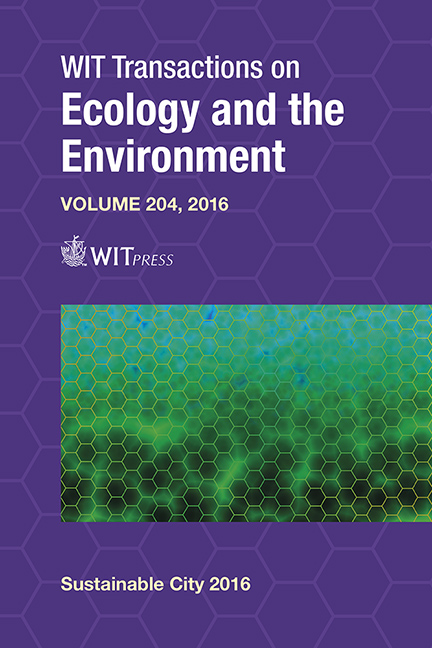Cluster Analysis Applied To The Evaluation Of Urban Landscape Quality
Price
Free (open access)
Transaction
Volume
204
Pages
11
Page Range
93 - 103
Published
2016
Size
377 kb
Paper DOI
10.2495/SC160091
Copyright
WIT Press
Author(s)
A. Campos, R. C. Oliveira
Abstract
The quality of the urban landscape is a complex concept which is difficult to define and synthesize. The tri-dimensional characteristics of this quality – aesthetic, cultural and functional features – can only be improved through ensuring that some key elements (such as harmony, equilibrium, coherence, diversity, complexity, management and the sustainability of the urban landscape) are taken into account. Therefore, a deeper analysis of those aspects of the urban environment and public space which devalue the quality of the urban landscape is required, and this is a new approach that needs to be adopted in order to consider all of these aspects.
The methodology adopted in this paper is based on the development of a set of criteria and indicators (variables) which not only enables the creation of a ranking of the quality of the urban landscape, but also permits deeper insights into those aspects that need to be specifically addressed in policies and actions, making it possible to map out Lisbon’s best and worst urban landscapes, thus establishing a basis for comparison, based on experts’ evaluation and Cluster Analysis.
Cluster Analysis is a statistical classification technique that aims to group entities (geographical units) in clusters which are internally homogeneous and heterogeneous among themselves, e.g. as different as possible between groups and as similar as possible within each group. The results obtained show that Cluster Analysis gives a solid response in grouping geographical areas, and the several clustering methods (hierarchical and non-hierarchical) used point to the same groups constitution, in terms of geographical units, which confirms the high consistency and robustness of the formed clusters.
Keywords
urban landscape, quality, indicators and indexes, Cluster Analysis





